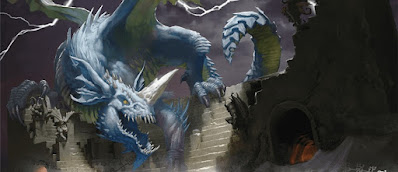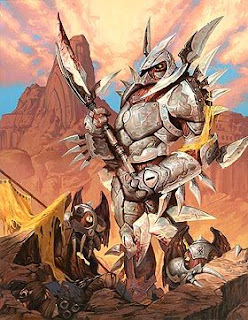Different dungeon masters have different tolerances. Some can handle ten, fifteen, or even twenty players at a time; others have a maximum of two or three players. Recently, I discovered what my limit was, and had to take a few unfortunate measures to remedy the problem. ‘Twas necessary. Since performing this surgery on one of my Dungeons and Dragons groups, my enjoyment of that particular campaign has gone up immensely. I no longer dread playing with that group, thinking, "I am the one solely responsible for keeping each and every one of my players entertained for four to six hours." Now, I can focus on making each player feel special, among other things.
Regardless of my limits, from my personal experience and conversations with others, there’s a couple of boons from playing with large groups. But truly, small groups reign supreme. This week, we’re exploring group size and how it affects our enjoyment of D&D.
By the end of today’s article, I hope you walk away with a good idea of how to handle a big & rowdy group, why a small group is better for pleasant play, and how enjoyment based on group size is utterly subjective. Let's roll.
Large and In Charge
- Turn Timers: Encourage players to know what their characters will be doing on their turn in combat. If players take too long on their turn, begin to use a turn timer with a limit of 30 seconds to 1 minute. When folks spend 10-15 minutes deciding what they’ll be doing on their turn, there’s a problem.
- The Talking Wand: If your group is experiencing issues with people speaking over one another, enstate ‘The Talking Wand.’ While the Wand is in play, only the person holding it may speak or converse with NPCs. This gives everyone (hopefully) a chance to speak and lets everyone hear what the person speaking is saying. If no one can hear what the wizard is telling the angry rakshasa, it will negatively impact everyone’s experience.
- Decision Democracy: When players have fierce disagreements over which course of action their characters should take and it leads to constant party splits, enforce democracy. If an important decision must be made by the party, hold a vote. The party must go with the majority’s decision; those who refuse can leave the group. For D&D to work, there cannot be constant party splits. Half the group can’t travel to the orc encampment while half decide to sail the longship across the river.
If everyone at the table is engaged, you’re doing what you’re supposed to; and, I stoutly believe, it is much more difficult with a large group. Some people may be up to the challenge and the stress involved; others won't.
Small but Steady
When playing with little groups, ensure your story isn’t completely based on a plot of your own design. Instead, it should be built around the player characters. Their background and actions should have a substantial impact on how the tale unfolds. With a tiny group, basing plot elements on parts personal to each, individual character is far easier for both the dungeon master and the players.
Enjoyment
If you’re on the other end, let me know why, I’d love to read other folks’ perspectives.
In Summary
- Large groups are usually rowdy, difficult to plan with, and rarely progress through the story or campaign at a reasonable pace. To make them work, you’ll need to enstate rules.
- Small groups are intimate, progress at whatever pace the group prefers, and allow everyone to participate.
- Every dungeon master has a different tolerance for group size; some can live and thrive with groups of fifteen people, some can’t. Don’t go above your limit, and don’t stress yourself out attempting to please fifteen people in a game meant for four to six.
Eager for more RJD20? Begin here, subscribe to the RJD20 newsletter, and explore RJD20 videos on YouTube.
Check out Villain Backgrounds Volume I, a supplement that crafts compelling villains.
Please send inquiries to rjd20writes@gmail.com.




